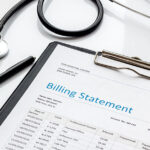
The healthcare industry has long suffered from a weak collections department, which has resulted in long waiting periods before insurers are able to recover money owed by healthcare providers. This gap is known as accounts receivable days, and it’s one of the biggest problems plaguing the sector today. This article provides seven steps to reduce accounts receivable days in healthcare and tells you how they came to be such an issue. It’s important that those working in the sector work toward eliminating the problem, and we hope that these steps will help on that front!
Analyze Where You Are in Terms of AR
Before you make any changes to your AR process, you should analyze your current AR situation. You might be surprised at what you find. Once all data is available, it is necessary to determine if a problem exists in terms of aging invoices and adjust accordingly. There are many advantages of implementing an AR plan, and with effective planning, it can be done efficiently. When asked about one’s opinion on something or someone being discussed, one will usually offer their own feedback or support, not agree with someone else’s already said.
Invest in Technology
This is a good idea since you can achieve cost savings in many areas. One of these is by reducing your employee’s work hours. Most people save around 50% of their AR Days by using time recording solutions to track employees’ time on their company-issued laptops and using call tracking solutions to identify any soft calls that are getting stuck in queues instead of actually being answered by a representative. These tools will help you reduce costs and make sure your representatives are working efficiently and effectively when they are in front of customers.
Increasing the Number of Payment Options Available to Patients
Many healthcare organizations accept only cash or checks for their services, leaving patients feeling frustrated and stuck with huge medical bills. Today’s health-conscious consumers want more options than just paying for their appointments at the point of service; they’re increasingly turning to healthcare payment plans and other flexible financial arrangements that give them time to pay for service. If you have a lot of accounts receivable days, your patient base might be looking for a better way to pay. By offering patients time and flexibility, you can collect faster while improving relationships with your customers—without compromising your bottom line.
Provide Accurate, Timely, and Frequent Invoices
Having clear payment terms on your invoices is a must. You don’t want to be confused about what terms you accept and when you expect a payment, so make sure you are upfront with your patients. Do they have to pay before or after a certain date? Are they allowed interest-free payments? What happens if they don’t pay on time? These are all questions that should be answered upfront, so both parties know exactly what is expected of them throughout their relationship.
Delegating Patient Collections
As a healthcare professional, you are busy enough. If collecting payments is taking up your time and energy, it’s time to delegate. Any member of your team who can communicate with patients can likely collect unpaid patient balances. Plus, delegating means your staff is working on tasks that align with their goals and development plans. Your best bet? Try peer-to-peer patient collections – data shows that nonclinical personnel has a better success rate than clinical staff when collecting past due accounts receivables.

The healthcare industry has long suffered from a weak collections department, which has resulted in long waiting periods before insurers are able to recover money owed by healthcare providers. This gap is known as accounts receivable days, and it’s one of the biggest problems plaguing the sector today. This article provides seven steps to reduce accounts receivable days in healthcare and tells you how they came to be such an issue. It’s important that those working in the sector work toward eliminating the problem, and we hope that these steps will help on that front!
Analyze Where You Are in Terms of AR
Before you make any changes to your AR process, you should analyze your current AR situation. You might be surprised at what you find. Once all data is available, it is necessary to determine if a problem exists in terms of aging invoices and adjust accordingly. There are many advantages of implementing an AR plan, and with effective planning, it can be done efficiently. When asked about one’s opinion on something or someone being discussed, one will usually offer their own feedback or support, not agree with someone else’s already said.
Invest in Technology
This is a good idea since you can achieve cost savings in many areas. One of these is by reducing your employee’s work hours. Most people save around 50% of their AR Days by using time recording solutions to track employees’ time on their company-issued laptops and using call tracking solutions to identify any soft calls that are getting stuck in queues instead of actually being answered by a representative. These tools will help you reduce costs and make sure your representatives are working efficiently and effectively when they are in front of customers.
Increasing the Number of Payment Options Available to Patients
Many healthcare organizations accept only cash or checks for their services, leaving patients feeling frustrated and stuck with huge medical bills. Today’s health-conscious consumers want more options than just paying for their appointments at the point of service; they’re increasingly turning to healthcare payment plans and other flexible financial arrangements that give them time to pay for service. If you have a lot of accounts receivable days, your patient base might be looking for a better way to pay. By offering patients time and flexibility, you can collect faster while improving relationships with your customers—without compromising your bottom line.
Provide Accurate, Timely, and Frequent Invoices
Having clear payment terms on your invoices is a must. You don’t want to be confused about what terms you accept and when you expect a payment, so make sure you are upfront with your patients. Do they have to pay before or after a certain date? Are they allowed interest-free payments? What happens if they don’t pay on time? These are all questions that should be answered upfront, so both parties know exactly what is expected of them throughout their relationship.
Delegating Patient Collections
As a healthcare professional, you are busy enough. If collecting payments is taking up your time and energy, it’s time to delegate. Any member of your team who can communicate with patients can likely collect unpaid patient balances. Plus, delegating means your staff is working on tasks that align with their goals and development plans. Your best bet? Try peer-to-peer patient collections – data shows that nonclinical personnel has a better success rate than clinical staff when collecting past due accounts receivables.




Recent Comments